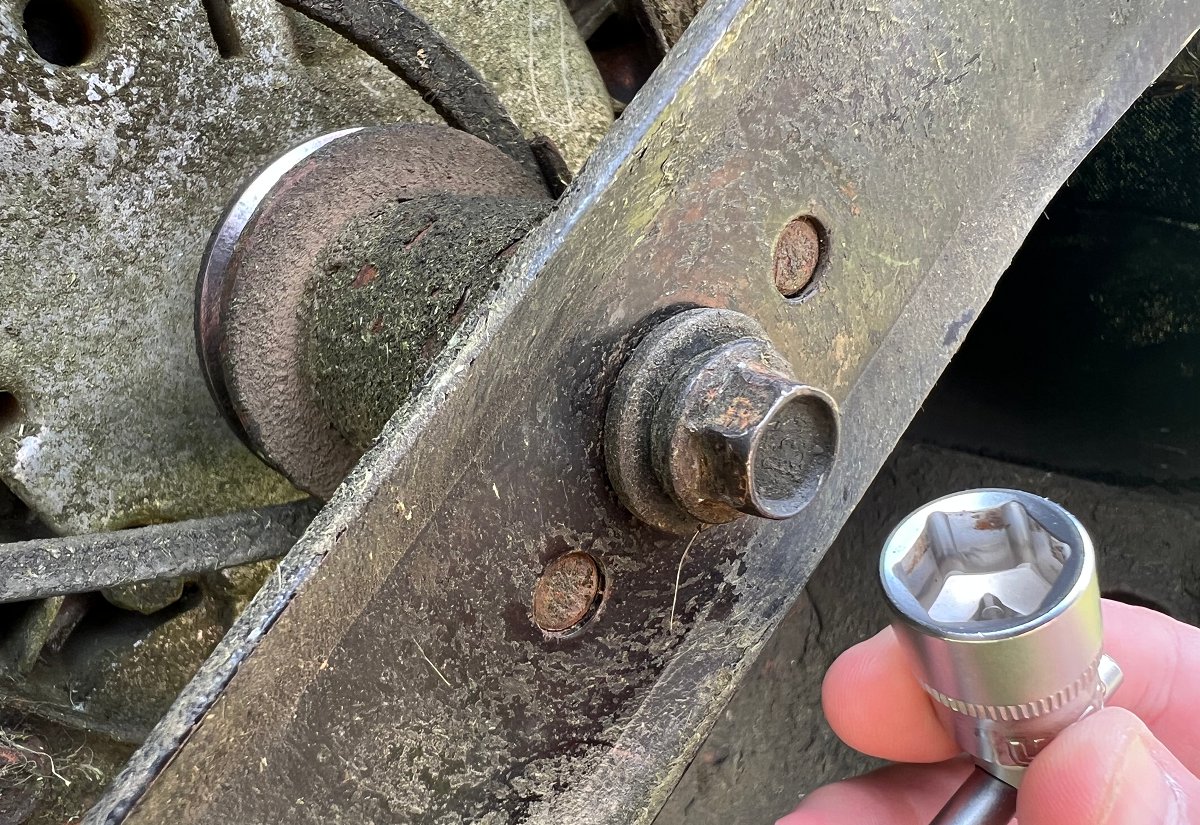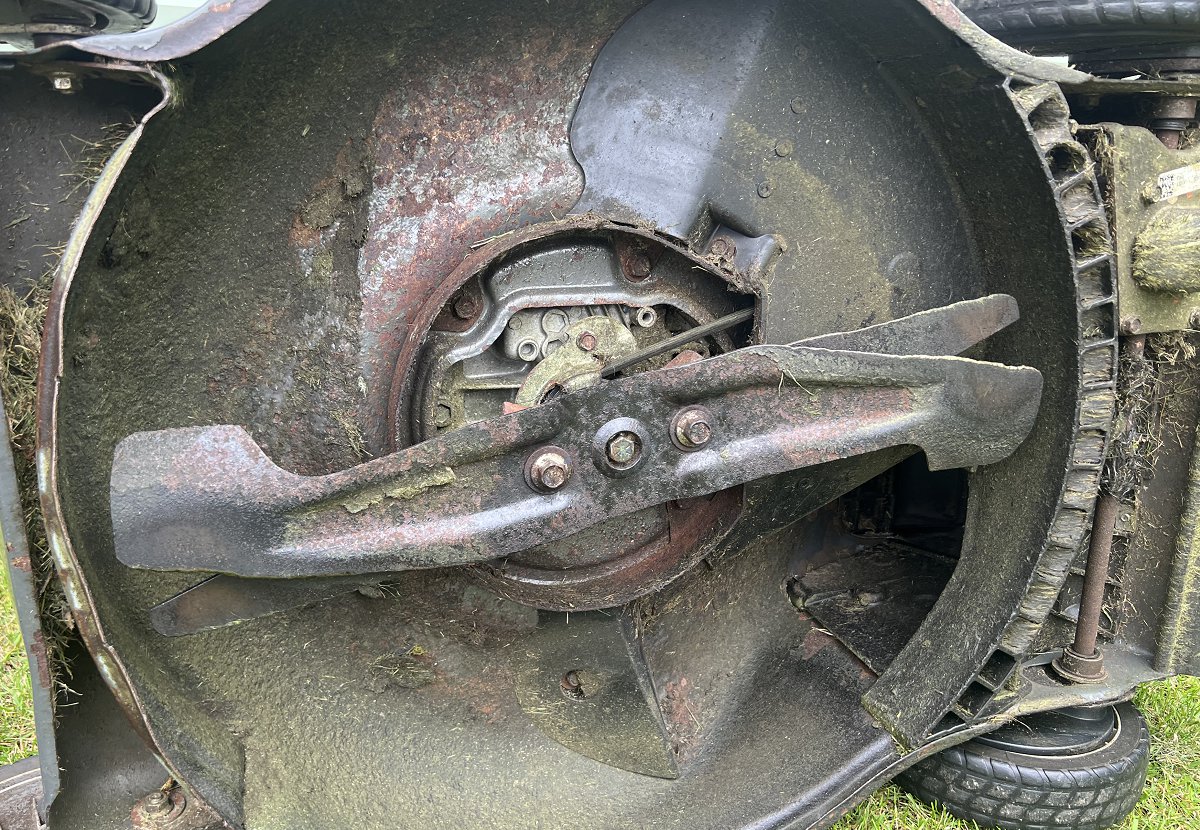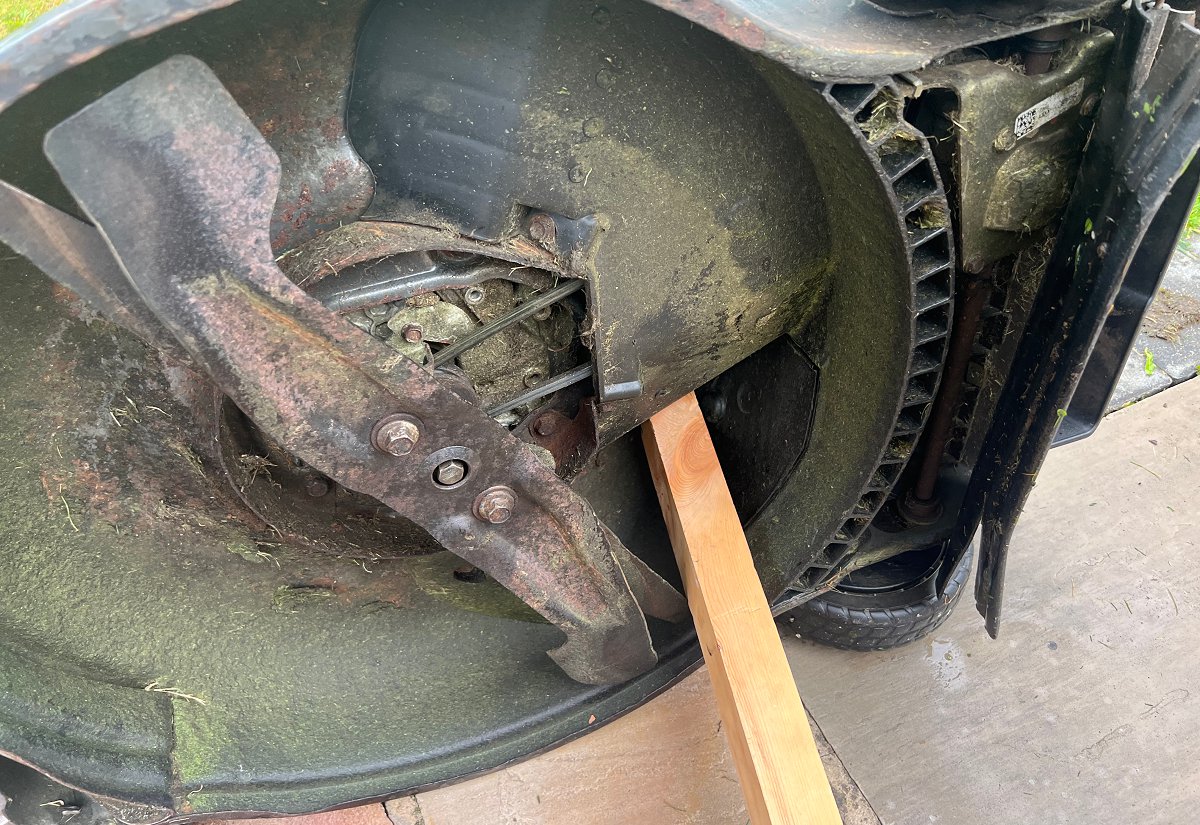Did you find a stump while mowing? Or are you not happy with the cut you are getting from your mower? It could be time to change the blade.
If you don’t know how much torque the blade requires, I am here to help you with that.
I’ve put together a guide on everything you need to know about torque specs for your mower.

Rough Guidelines on Torque Specs for Lawn Mower Blades
Lawn mower maintenance is often overlooked, but it can really save you a lot of bother. Changing out the blade when it’s old or damaged, for example, will not only give you a better cut, but it will help increase the life of your mower.
When it comes to tightening the blades, it is important to know how much torque your mower requires.
Later on in the article, I will explain what not properly torquing your blades could mean for you, your yard, and your mower.
Torque specs for mower blades do vary depending on what type of mower you have. Here’s what most manufacturers recommend:
- Walk-Behind Mowers – As always, check your owner’s manual for the specific torque for the blade, but most walk-behind blades should be torqued between 35-50 foot pounds.
- Riding Lawn Mowers – Recommended toque for most riding lawn mowers falls somewhere between 70-90 foot pounds.

How to Apply the Right Amount of Torque
Now that you know what torque you need for your specific mower, let’s get that blade on there. But, how do you measure the torque?
I have done it (many moons ago when I knew far less), and I am sure you have done it. When it came time to change a blade, I held the new blade on the lug, grabbed my impact drill and sent it home.
Was everything okay? Probably. But, I am going to explain the proper way to tighten your blade so you get exactly the right amount of torque.
- Size is Important – Figure out the size of the bolt that is tightened down on your old blade. You should be able to look at that information in your owner’s manual or online.After you figure out the size, don’t just reach into the toolbox and grab a wrench. You need a torque wrench for this project.
- Torque Wrench – After figuring out what size torque wrench you need, go down to your local hardware store and purchase it.Buy a torque wrench with a rating from 0-100 foot pounds. This will handle the blades on most riding and walk-behind mowers.You will see on the wrench there is a gauge that you can set. Set this number to the torque specs listed in your owner’s manual.
- Block It Up – Grab a semi-long piece of wood and place it in the path of the blade. Manually turn the blade till the blade makes contact with the wood.The piece of wood will keep the blade from turning while you are loosening and tightening the blade. Do not use your hand; I am saying that from experience!

Potential Consequences of Not Applying Right Torque for Your Blade
It may seem overkill to say this, but if you do not follow the installation specs in your owner’s manual, your mower could be in big trouble.
I highly recommend you take your time to learn about what your mower requires. Here are just a couple of things that could happen.
Not Tight Enough
If you don’t tighten your blade enough, it will be very obvious. You will be able to see it in your cut. With a wobbly blade, you will see uneven cuts and possibly gouging of the turf.
Whether you are on a riding mower or push mower, you will also be able to feel the vibration of the blade as it spins loosely.
This will probably lead to more chipping of the blade too, because it will have more opportunity to strike objects at different heights.
Too Tight
Alright, so instead of it being too loose, you overcompensated and applied too much torque. When you tighten the blade too much, you are risking severe damage to your mower.
Your engine will have to work harder to spin the blade because of the excess tension. This can lead to a shorter life span for your entire machine.
Also, when your blade is too tight, you will notice that your cut will not be as crisp and clean because the blade is fighting to just complete a full rotation.
A Few Final Thoughts
Alright, so now that you know why torquing your lawn mower to the proper specification is important, I just have a few other minor details to include.
- Just remember, some lawn mower blades are reverse-threaded onto the machine. I know that seems weird, but sometimes it is the case.
- Also, make sure you buy the proper blade for your mower. It’s not a “one size fits all” hat at the gas station.
- Lastly, take your time making sure you put your blade on correctly. There is nothing more annoying than rushing a project, just to be heading back in the shop as soon as you engage the blades.


Your article gives torque units in pounds. Pounds is a force and not a torque. Torque values include a force and a moment arm. Usually when pounds are used the torque is in either “inch-pounds” or “foot-pounds”. Worthy to note is that 12 in-pounds = 1 foot-pound.
Hi James!
Thanks a bunch for making this clarification! I’ve gone in and amended the article so that the units are correct. There certainly is a big difference between pounds and foot (or inch) pounds.
Cheers, Tom.
I have a 12 volt brushless Bosh impact driver. My Husqvarna riding mower takes 50 torque to tighten the blades. What do I set my driver at for proper torque?
Hi Lori,
First, you will need to find out what the torque is measured in.
Inch pounds (in-lb)
Or
Foot pounds (ft-lb)
Once you know what your mower bolt needs and what the driver can achieve, you’ll then need to make sure that they are both on the same scale if they are different. You can use the following calculation to get them to the same scale.
(in-lb) / 12 = (ft-lb)
Or
(ft-lb) x 12 = (in-lb)
Then, you’ll need to check your driver’s running and breakaway torque. You need to make sure the running torque doesn’t exceed the rating of the bolt.
Working out torque can be a complicated process, but as a note, when you’re tightening up the bolt, it really doesn’t need to be excessively tight. A short socket wrench is plenty to tighten a bolt on a blade.
Hope this helps!
Cheers, Tom.
“Lastly, take your time making sure you put your blade on correctly.”
I’m not sure what you mean. Do you mean the correct torque?
Hi Bob,
When I said, “Lastly, take your time making sure you put your blade on correctly.” I was referring to going slowly so as not to make any mistakes. I always find that when I rush jobs, I’m more prone to running into trouble. So, if you take your time, you’ll have a better chance of remembering all the steps and getting it right the first time.
Sorry for the confusion and I hope this clears things up 🙂
Cheers, Tom.